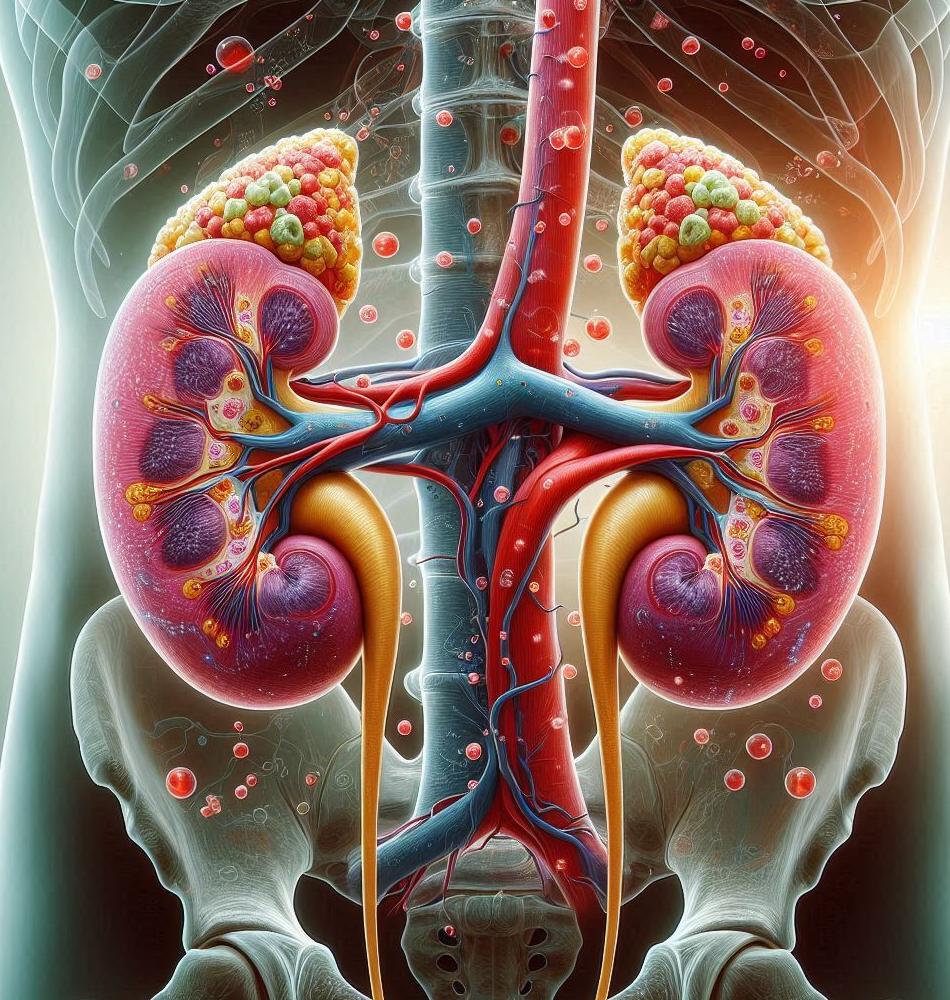Understanding Pyelonephritis: Causes, Symptoms, and Treatment 🩺
Have you ever wondered about the impact of infections on your health, particularly when it comes to your kidneys? In this article, we will explore pyelonephritis, a serious type of kidney infection that can affect anyone. Not only will we discuss how it’s contracted, but we will also delve into its significant symptomatology and the best treatment options available. Prepare to uncover everything you need to know about pyelonephritis!
What is Pyelonephritis? 🌡️
Pyelonephritis is an inflammation of one or both kidneys caused by a bacterial infection. It often starts in the lower urinary tract, such as the bladder or urethra, before ascending to the kidneys. This condition can be acute, presenting suddenly, or chronic, developing gradually over time. Recognizing this distinction is crucial for effective management and treatment.
How Do You Get Pyelonephritis? 🔍
Understanding how pyelonephritis develops is essential in preventing it. Here are the most common ways in which one can contract this kidney infection:
1. Bacterial Infection 🚨
The majority of pyelonephritis cases occur due to bacteria. Common pathogens include:
- Escherichia coli (E. coli)
- Klebsiella pneumoniae
- Proteus mirabilis
These bacteria typically enter the urinary tract through the urethra, multiplying in the bladder, and eventually migrating to the kidneys.
2. Urinary Tract Infections (UTIs) 💧
UTIs are often a precursor to pyelonephritis. A recurring UTI can escalate into a more severe infection targeting the kidneys. Risk factors for UTIs include:
- Female anatomy
- Compromised immune system
- Improper sanitary practices
3. Kidney Stones ⛏️
Kidney stones can obstruct the urinary tract, leading to infections. If the flow of urine is blocked, bacteria can thrive and propagate, resulting in pyelonephritis.
4. Pregnancy 🤰
Pregnant women are at a higher risk of pyelonephritis. The enlarging uterus can obstruct the flow of urine, creating conditions conducive to infections.
5. Catheter Use 🚑
Patients who require urinary catheters for extended periods are likely to develop infections, as these devices can introduce bacteria into the urinary tract.
Recognizing the Symptoms of Pyelonephritis 😷
Being aware of the common symptoms associated with pyelonephritis is essential for timely intervention. Symptoms can vary from person to person but typically include:
Common Symptoms 🩹
- High fever and chills
- Flank pain (pain in the back and side)
- Frequent urination
- Pain during urination
- Nausea and vomiting
- Cloudy or foul-smelling urine
- Blood in the urine
Diagnosis of Pyelonephritis 🔬
Determining whether an individual has pyelonephritis typically involves several diagnostic methods:
1. Physical Examination ⚕️
A healthcare provider will usually conduct a thorough physical examination, focusing on symptoms such as flank pain and fever.
2. Urinalysis 🧪
A urine sample will be analyzed for the presence of white blood cells, red blood cells, and bacteria, all of which indicate an infection.
3. Imaging Tests 🖥️
In some cases, doctors may request imaging tests, such as ultrasound or a CT scan, to visualize the kidneys and assess for underlying complications like abscess formation.
Treatment Options for Pyelonephritis 💊
Treating pyelonephritis effectively is vital to prevent serious complications, including kidney damage. Treatment generally involves:
1. Antibiotics 📅
Antibiotics are the cornerstone of treating pyelonephritis. The specific antibiotic prescribed will depend on the bacteria identified through urine tests.
2. Pain Management 💉
Over-the-counter pain relievers like ibuprofen or acetaminophen can alleviate discomfort. However, stronger medications might be required in more severe cases.
3. Hospitalization 🚑
In severe cases, especially when there is vomiting or inability to keep oral medications down, hospitalization for intravenous antibiotics may be necessary.
4. Addressing Underlying Issues 🔧
For recurrent pyelonephritis cases, it’s essential to identify and address any underlying issues, such as kidney stones or anatomical abnormalities, that may contribute to frequent infections.
Frequently Asked Questions about Pyelonephritis ❓
- What are the risk factors for developing pyelonephritis?
- Can pyelonephritis lead to kidney damage?
- How long does it typically take to recover from pyelonephritis?
- Can dietary changes help prevent pyelonephritis?
- Are there any long-term complications related to pyelonephritis?
Prevention Strategies 🛡️
Preventing pyelonephritis is an achievable goal through proactive health practices. Here are some prevention tips:
- Stay hydrated to flush out bacteria.
- Practice good hygiene, particularly after using the bathroom.
- Urinate after sexual activity to eliminate bacteria introduced during intercourse.
- Consider cranberry products, as they may help prevent UTIs.
Conclusion ✅
Pyelonephritis is a potentially serious kidney infection that warrants attention. Understanding how to contract it, recognizing the symptoms, and knowing the appropriate treatments can empower individuals to take charge of their renal health. By implementing prevention strategies and seeking prompt medical care when symptoms arise, one can effectively minimize the risks associated with pyelonephritis. Stay informed and take proactive measures to safeguard your kidneys!
.png)






